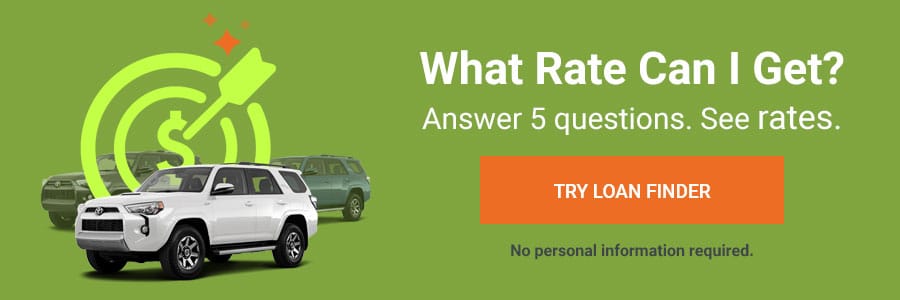Knowing how car dealers make money can help you save on your next car purchase.
We’ve all seen a stretch of road that’s dominated by car dealerships. Ford, Chevy, Toyota, Mercedes, BMW — seemingly endless lines of vehicles under various brands.
But the typical driver doesn’t understand how these dealerships operate, such as how they make money or how profitable each car sale is.
This is useful knowledge to have when you’re shopping for the best car deal. If you understand how salespersons and dealers make money — and how much money — you’re better equipped to negotiate. Equally as important, you’ll also be able to spot shady sales tactics and avoid nefarious dealers.
Let’s start by dispelling a common misconception.
Do Auto Manufacturers Own Dealerships?
Despite the branding, most dealerships are privately owned. Auto manufacturers like General Motors and Ford have experimented with the retail side of things in the past, but these trials were short-lived.
So, your local Ford dealership isn’t owned by Ford Motor Company — it’s franchised by an individual or group of investors. Tesla is one of the few exceptions, as this EV manufacturer sells directly to consumers.
From a high level, the relationship between automakers and dealerships is fairly simple. Auto manufacturers produce vehicles, and dealerships enter into franchise agreements to sell them. (Hence why vehicles have a Manufacturer’s Suggested Retail Price, or MSRP.) In many cases, franchisees have separate partnerships with multiple manufacturers, meaning they sell several vehicle brands.
Long story short, automakers and dealerships are reliant on one another in the car business. Automakers may even offer dealerships floor plan financing to help them build up their inventory.
MSRP: the Manufacturer’s Suggested Retail Price, also referred to as sticker price
Invoice price: this is what the dealer pays the automaker for the vehicle
How Do Car Dealers Make Money?
Since car dealerships don’t produce the cars they sell, they have to purchase their inventory. This is, by far, a dealer’s biggest expense. Each year, dealerships upgrade their lots with the latest models offered by their automaker partners. Moreover, they also acquire used cars via trade-ins and wholesale auctions. (Dealers may also trade used vehicles with one another.)
To make a profit on that inventory, they have to charge more than their invoice price (i.e., what they paid the automaker). Just like any other product-based business. However, despite the markup, car sales aren’t even close to being the most profitable revenue source for a car dealership.
Let’s explore how car dealers make money.
New car sales
From a total revenue perspective, new car sales account for the largest percentage of a dealerships income — almost 55% according to National Automobile Dealers Association (NADA). Considering the average selling price of a new car in December 2021 was a hair over $47,000, that’s not a surprise.
However, in terms of profitability, revenue can be misleading for car dealerships. That’s because it doesn’t take into account the cost of purchasing each car from the automaker. We can look at AutoNation, which operates 339 new vehicle franchises around the US, for more insight.
In 2021, this automotive retailer averaged $46,015 of revenue per new vehicle sale. But the typical new vehicle cost AutoNation $41,447 — which equates to $4,568 of gross profit for every sale. And that’s before sales commissions and other corporate expenses.
That said, there are dealer holdbacks and incentives that can offset a dealership’s vehicle costs. For instance, a manufacturer may offer a cash incentive to dealers for hitting certain sales volume targets. Or they may provide advertising rebates to help market a new vehicle.
Still, new cars aren’t even close to being the biggest driver of profit for dealerships.
Used car sales
While automakers are responsible for the new models in a dealer’s inventory, consumer trade-ins and car auctions are responsible for most of the remainder.
A dealership typically relies on its parts and service department to recondition used vehicle trade-ins and auction purchases before putting them on the lot. If a used vehicle sits on the lot for long enough, the dealership may try to sell the vehicle at auction.
Similar to new car sales, used car sales generate plenty of revenue for dealerships — but not a lot of gross profit. Using AutoNation as an example, used car sales accounted for 33.4% of the company’s revenue but only 13.9% of its gross profit in 2021.
Finance and insurance
Cars are big purchases, especially new models. Most people don’t have $40,000 to $50,000 lying around for a new set of wheels. That’s where loans come into play.
According to NADA, roughly 81% of new vehicles and nearly 35% of used vehicles had some sort of financing at the end of 2020.
Finance and insurance (F&I) products can (and often do) boost a dealership’s profit margins. Some dealerships offer direct financing programs to their customers. That said, most dealers arrange car loans with third-party lenders — which can include the manufacturer’s captive lending arm. In return, the lender pays the dealer a commission.
F&I: short for financing and insurance, e.g. a dealership’s F&I department
Captive lender: the automaker’s branded financing, e.g. Honda Financial Services
It’s also common for dealerships to offer vehicle protection add-ons, such as extended warranties, GAP, tire-and-wheel protection, etc. And similar to financing, dealerships often outsource these products to the automakers’ captive lenders.
Just how profitable are these product commissions? F&I accounted for only 5.4% of AutoNation’s revenue in 2021 — but 28% of its gross profit. In another light, F&I added $2,449 on average to every retail vehicle sale.
For the record, it’s always prudent to explore your financing options to find the best interest rate.
Parts and services
Although it may seem like a secondary revenue source, the parts and services department is the true moneymaker for dealerships. Vehicle repairs produce big profits relative to other sources of revenue. For AutoNation, parts and services represented almost 34% of the company’s gross profit in 2021.
Why do vehicle repairs earn dealerships so much green? High hourly rates for non-warranty labor — particularly for unneeded services. In the event the repair is covered under a warranty program, the warranty provider (e.g., manufacturer’s warranty) would reimburse the dealer at a predetermined rate. If the repair isn’t covered, the cost is based on the parts and services department’s own rates.
This can lead to a hefty bill if drivers aren’t observant, assertive, and knowledgeable of their car manuals’ recommended services. (Yes, you can haggle over car repairs.)
How Do Car Salespersons Make Money?
Although some dealerships may offer a minimum hourly wage, car salespeople typically make their living from commissions. More specifically, front-end and back-end commissions.
The former is usually 20-25% of the vehicle’s gross profit — the difference between its purchase price and its cost. So, if a salesperson sells a $20,000 SUV for a $1,000 gross profit, they may get a front-end commission between $200 and $250.
The latter is based on F&I products purchased on the back-end. Let’s say the SUV-buyer decides to finance their new car through the dealership, netting the dealer $1,000. The salesperson could receive a 5% commission of $50.
As you can see, salespersons are incentivized to sell the car for as much as possible. Hence why negotiation is an integral part of the process for both sides.
4 Shady Car Dealer Practices to Watch Out For
Of course, not all people selling cars fit the stereotype of a sleazy money-grubber. But the stereotype exists for a reason — some of these individuals and dealers use shady practices to tip the scales in their favor. So, it’s important to not only understand how car dealerships make money but also be able to spot shady practices.
1. Unwillingness to negotiate
Car lots aren’t like grocery stores. Unlike the loaf of bread on aisle six, the price of the car you want is negotiable. To give you a benchmark, the average new vehicle sale for AutoNation generated $4,568 of gross profit in 2021. For used cars, that figure was $2,044.
If you ever come across a salesperson or dealership that’s unwilling to bend even just a few hundred dollars, you may want to look elsewhere. Fortunately, sites like Kelley Blue Book and Edmunds exist. You can browse these platforms to find the fair market value of your preferred vehicle. If a dealer’s pricing is well above this value and it won’t come down, that’s a red flag.
2. Pushy encouragements to finance through the dealership
Although you’d think a car dealer would prefer the certainty of an all-cash purchase, that’s not the most profitable option. Dealership financing programs can generate healthy gross profits, so they can make more money in the long run from issuing loans.
In fact, a shady dealer may even raise the sticker price if you offer to pay with all cash.
This is an important factor to keep in mind as you’re going through the car buying process. Any dealer that claims financing is the best option may be trying to pad their bottom lines.
3. Credit checks for all-cash transactions
When a car buyer purchases a vehicle with all cash, there’s no need for the dealer to run a credit check. However, a dishonest dealer may reference the Patriot Act as a justification to check your credit. That would be false.
Yet, it happens to car buyers all the time.
“A dealership had the audacity to tell me that a credit check is required by the federal law,” says Marilyn Gaskell, Founder & Hiring Manager of TruePeopleSearch.
A credit check may not seem like a huge deal, but the hard inquiry can knock a few points off your credit score. On top of that, the salesperson may use the information to get a leg up on negotiating.


4. Credit checks for test drives
Unlike the above situation, pulling your credit for test driving purposes has more gray area.
The Fair Credit Reporting Act provides a list of permissible purposes to pull credit. One such instance is when the consumer consents in a written document. So, if you agree in writing to a credit check before a test drive, the dealership is likely acting in accordance with the FCRA.
“Dealers can likely justify this requirement so long as consent is obtained and it is imposed in a non-discriminatory way,” explains Jim Potts, Chief Legal Officer at The Savings Group. In other words, if the dealership has a blanket policy about credit checks for test drives that all salespeople enforce for all customers, it’s probably lawful.
Jim continues, “However, if they simply take your driver’s license for a test drive and subsequently pull credit with that DL information without consent or other permissible purpose, then it would likely be a FCRA violation.”
In short, keep an eye on your credit report when you test drive vehicles. If a dealership pulls your credit without your permission, consider disputing it.
Knowledge Is Money-Saving Power
The car shopping process can be stressful, especially for first-time car buyers. Car salespeople sell for a living — they know the game well. Some may even stretch the rules, claiming that credit checks are federally mandated or pulling your credit without your consent. That’s why it’s critical for you to know how car dealers and their employees make money as well as your rights as a consumer.
;)



